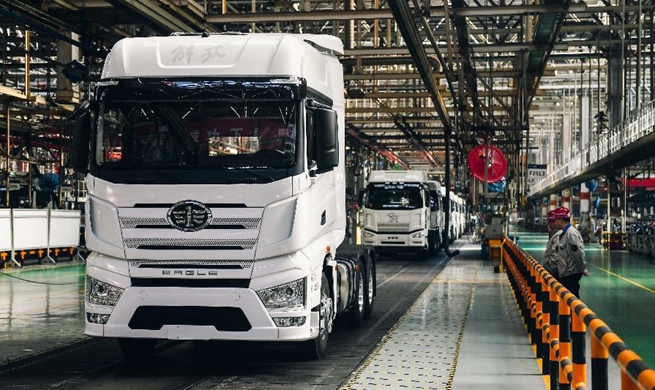BEIJING, April 19 (Xinhua) -- Though repeating a lie creates the illusion of truth, yet myths, unlike the plain truth which is sustained by fact, can't stand the test of time.
Washington has been adept at blaming other countries for its domestic woes and its recent trade offensive against China, to some extent, also falls into this category.
The Trump administration claims that since China joined the World Trade Organization (WTO) in 2001, the United States has lost more than 60,000 factories.
However, a quick fact-check will show that the reality is something else. Statistics indicate that the decline in U.S. manufacturing jobs is more of a domestic issue than due to trade with low-wage economies like China.
According to U.S. economist Philip Levy, irrespective of China's entry into the WTO, the share of manufacturing employment in total U.S. nonfarm payrolls -- the primary indicator used to assess U.S. job creations -- fell about 30 percent every 16 years. The China factor, instead of generating the decline, actually represents slowing of an existing trend.
What's more, in a study on the impact of expanding Chinese imports on jobs, Yale University professor Lorenzo Caliendo said access to low-cost intermediate inputs from China has increased employment in non-manufacturing sectors, including retail, construction and services, to offset the job losses in manufacturing, resulting in a rise in welfare.
A number of sobering facts explains what truly causes job losses.
First, it is not Chinese workers that take away jobs from U.S. workers. U.S. firms are choosing to invest and set up factories in China, where the workforce is skilled and cheaper.
Actually, U.S. investors' foreign investments have risen dramatically since the 1990s, shifting low-value-added, labor-intensive industries to developing countries for low-cost assembly.
Second, U.S. factories don't need as many workers as they used to because robots are increasingly doing the work and the industry is becoming more productive and closer to markets.
In fact, while trade accounted for about 12 percent of the lost U.S. factory jobs, 88 percent of the jobs were taken over by robots and other factors at home.
Moreover, there is no downturn in U.S. manufacturing output. Rather, investment in automation and software has doubled the output per U.S. manufacturing worker over the past two decades.
Last but not the least, the two largest economies in the world are interdependent and more than bilateral trade partners. According to the U.S. Department of Commerce, U.S. exports of goods and services to China supported an estimated 910,000 jobs in 2015 -- 601,000 were supported by goods exports and 309,000 by service exports.
For years, the United States has enjoyed service trade surplus with China. The surplus recorded 38 billion U.S. dollars in 2016, 11.6 percent more than in 2015 and up 908 percent from 2001.
More importantly, when looking at the overall U.S. trade deficit, the proportion of U.S. trade deficit with China is on the decrease year by year. The United States' claim that its trade deficit with China is widening is based on questionable algorithms. No one can deny that the majority of the profits goes into the U.S. pocket.
It's primitive for the U.S. Government to tackle trade disputes by wielding the trade protectionism stick. The drop in U.S. manufacturing employment should not be the only indicator to gauge the balance of benefits from the economic relationship with China, nor should it overshadow the sizable benefits of the trade to the American economy and the potential of fresh trade gains.
Any trade war will affect millions of workers in hundreds of real and varied places, and ultimately produce unexpected ramifications for local communities in the United States.
Targeting China will only divert energy from the real challenge and put the future of the U.S. economy at risk.

















